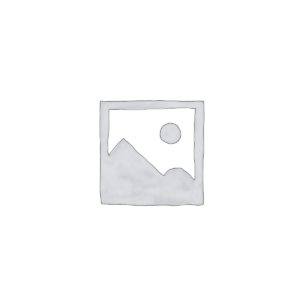Have you ever felt a nagging sense that there’s more to life than what meets the eye? Many people feel drawn to explore their spirituality and seek deeper meaning, often leading them to the concept of the open third eye. Opening your third eye may lead to vivid dreams and increased awareness. This involves looking beyond our five senses.
This exploration of the open third eye will cover various aspects, from its meaning and associated benefits to practical techniques for activating it. We’ll discuss meditation and yoga poses, essential oils, and the potential link between the third eye and the pineal gland. Whether you’re looking to deepen your intuition or simply seeking a greater understanding of your consciousness and well-being, exploring the idea of the open third eye may intrigue you.
Table of Contents:
- Understanding the Third Eye
- Benefits of Open Third Eye
- Practical Techniques to Open Third Eye
- Integrating Open Third Eye Practices into Daily Life
- Open Third Eye: Navigating Potential Challenges
- Conclusion
Understanding the Third Eye
The third eye, also known as the ajna chakra, is often referred to as the “brow chakra.” It is linked to intuition, insight, perception, and spiritual awareness.
Unlike our physical eyes, which show us the outside world, the third eye is thought to be a gateway to inner realms. It can enhance self-awareness and spiritual wisdom. Its activation may involve the pineal gland, located in the brain’s center.
The Pineal Gland Connection
This tiny gland produces melatonin, a hormone influencing sleep and circadian rhythms. Some spiritual practices suggest the pineal gland plays a larger role, acting as an antenna.
It may receive higher frequencies of energy and information. However, this isn’t scientifically validated. These practices propose that stimulating the pineal gland may enhance one’s spiritual connection.
Benefits of Open Third Eye
Opening your third eye offers a deeper connection with your inner self, enhanced intuition, and greater mental clarity. It may also improve psychic abilities. Here’s what these benefits mean for you. As quoted by psychic astrologer Angel Dawn, “The third eye is a crucial energy center that is vital to strengthening one’s intuition and general mental and emotional intelligence.”
A Deeper Sense of Intuition
It allows you to make decisions based on your “gut feeling.” An activated third eye can boost confidence in your natural wisdom, allowing you to go with the flow of what feels right. This can lead to a greater sense of self-trust.
Enhanced Mental Clarity and Focus
Many people share experiences of increased mental focus, clarity, and a deep sense of understanding their beliefs after practicing mindfulness and mindfulness meditation practices relating to opening the third eye. This includes practicing mindfulness meditation and integrating mindfulness into daily life. Opening your third eye helps with focus.
Boosted Creativity and Imagination
Unlocking the third eye’s power is often credited with a renewed surge in imaginative abilities. It may help find ways to tap into your creative spark. Opening your third eye benefits your creative flow.
Stress Reduction
When facing complex life decisions, enhanced mental clarity through third eye awakening can reduce anxiety. It also helps you set proper intentions.
Practical Techniques to Open Third Eye
I’ve tried many of these techniques. The path toward an open third eye includes practices rooted in ancient traditions combined with modern methods.
I discovered a shift inward by actively engaging in these methods, even though it’s a personal journey. This requires consistent practice and patience.
Meditation
Meditation is an important tool for connecting to one’s intuition. It can help open your third eye. As astrologer Raquel Rodriguez notes, third eye activation allows you “to tap into a deep sense of inner wisdom and connect with the divine energy that flows through all things.”
Try sitting or lying down comfortably in Child’s pose. Visualize indigo light, symbolizing your intuition. Focusing on the space between your eyebrows can aid this practice. Guided meditation for open third eye is great for beginners.
In a quiet space with a soothing scent of sandalwood, let yourself be guided inward. Practicing mindfulness meditation or even practicing mindfulness is useful for opening your third eye.
Yoga
Many yoga postures stimulate the third eye. This aids in the energetic awakening of the ajna chakra via pineal gland activation and increased blood flow. It helps to connect it to the rest of your body’s energy network.
Here’s a step-by-step walkthrough of three beneficial poses:
- Child’s Pose (Balasana): Kneel on your mat with big toes touching. Sit back on your heels (as best as you can) and fold forward, resting your forehead on the mat. Arms can be extended forward or alongside your body. Hold this grounding pose to prepare.
- Downward-Facing Dog (Adho Mukha Svanasana): Start on all fours, then lift your hips up and back, creating an inverted V shape with your body. Spread your fingers wide and press palms down while lengthening your spine. Gaze toward your feet to subtly stimulate the energy flow toward the ajna chakra.
- Dolphin Pose: From downward-facing dog, lower forearms to the mat, keeping shoulders above elbows. Continue to lengthen the spine while relaxing your neck, shifting the gaze very softly inwards to gently stimulate the sixth chakra.
Essential Oils
Clary sage, lavender, and sandalwood have calming properties aiding in chakra meditation practices. These scents can aid deep relaxation and produce a heightened awareness. Try diffusing these essential oils before beginning any practice.
This could include meditation, breathwork, visualization, or physical movement. Connecting the scent’s activation effects with a calmer nervous system helps. This allows you to more effectively tune inwards during a practice.
Breathwork (Pranayama)
Breathing practices connect you deeply to your physical presence in any given moment. Two pranayama practices, Nadi Shodhana (alternate nostril breathing) and Bhramari (humming bee breath), are particularly beneficial.
They offer calming and grounding qualities, aiding mental clarity. Alternate nostril breathing is useful. These breathing techniques help with mental health and can be very powerful tools to open your third eye.
Integrating Open Third Eye Practices into Daily Life
Bringing awareness and intention to our daily activities opens your third eye. You can do this even when you aren’t meditating or doing yoga. Consistent daily practices integrate this higher state of awareness into your life.
This becomes evident in heightened awareness, supporting intuition and self-trust. You’ll benefit from a deeper understanding of yourself and increased awareness in daily life. Integrate practices for health benefits.
Dream Journaling
Pay attention to your dreams. Keep a dream journal to help bring insights from your subconscious into conscious awareness. Dreams provide a direct channel into your intuitive abilities. They help make deeper connections to your inner world, past, and potential future.
Mindful Living
The next time you start something, notice if you’re rushing. Be mindful in your daily tasks and focus on subtle energetic or environmental shifts that may usually pass unnoticed. Practice mindfulness.
As you tune inward on subtle energetic cues, you start to deepen your spiritual connection and development. Being mindful of every thought, feeling, and sensory experience fosters intuition. When feeling lost, bring attention and deep care to feelings arising from uncertain decisions. Purple kale and lapis lazuli can also promote third eye opening.
Affirmations
Using affirmations assists you in programming or redirecting subconscious thoughts. Consistent meditative thought re-calibrates mind states. It focuses on desired emotional states rather than passively experiencing autopilot emotions.
Affirmations that resonate with you connect your higher awareness throughout daily routines. This increases your intuitive abilities and overall spiritual well-being. Affirmations benefit mental health.
Open Third Eye: Navigating Potential Challenges
Sometimes what happens during practice is part of the greater experience or opening. Being patient helps discern temporary overwhelm versus something needing to be addressed outside of contemplative practice. This especially applies if you experience headaches or uncomfortable body sensations consistently. These sensitivities can also be a part of deeper spiritual development.
In order to truly make shifts inwards and better understand your subtle body, proper guidance may be needed. Seeking support could offer a deeper comprehension of your self-growth journey.
Conclusion
The concept of the open third eye has intrigued people for generations. Activating this power center leads many toward expanded awareness through consistent mindfulness meditation practices, bringing them closer to discovering their deepest intuitions.
Embracing its mental and spiritual benefits is possible by exploring practical daily practices that promote self-awareness. While the deeper workings remain scientifically debated, its importance for people actively pursuing inner growth through mindfulness or various spiritual traditions isn’t dismissed, even by skeptics.
As your awareness deepens by integrating open third eye practices with daily life, so too will your mental clarity. Deepening awareness of intuition helps us find truthful internal clarity, enabling better decision-making.
Those actively integrating an “open third eye” with yoga deepen their mind-body connections, allowing for greater inner awareness outside of formal contemplative practice. If something resonates, actively integrate and nurture it to learn whether this aligns with greater consciousness exploration.

